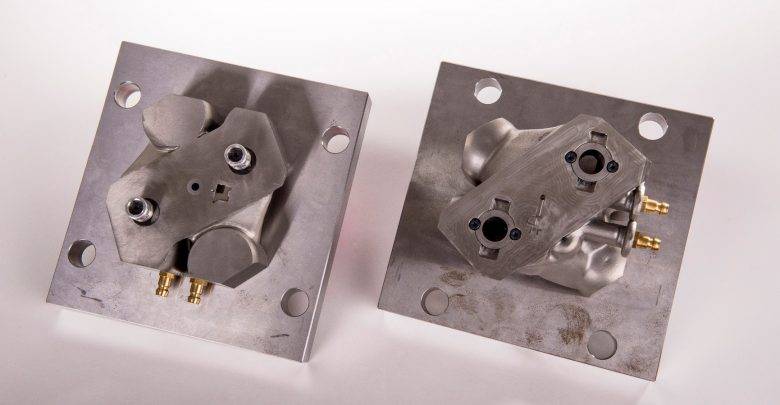German metal processing company Toolcraft is recognizing the benefits of integrating additive manufacturing into its injection molding and mold making processes. The company recently completed a successful project for the optical industry using metal AM in collaboration with Siemens.
The in-house project consisted of redesigning and producing a metal mold for a plastic part for the optical industry. By using additive manufacturing, Toolcraft says it was able to create a superior mold with optimized topology that was easier to manufacture and dramatically increased the efficiency of producing the final plastic component.
The original mold used for the part consisted of various components, including mold inserts, mold plates, mounting plates and standardized components. The tool weighed approximately 60 kg and measured roughly 125 x 125 x 130 mm. The goal of Toolcraft’s additive manufacturing project was to redesign the tool to improve the injection molding process in terms of time and simplicity.

The German company leveraged its know-how in metal AM to reconfigure the tool insert and optimize the mold topology to meet specific load requirements. Throughout the process—supported by Siemens NX software—a number of factors had to be kept in mind.
“Certain surfaces had to be retained during the topology optimization process in order to preserve the functionality of the mold,” explained Ralf Domider, design and simulation metal laser melting at Toolcraft. “Special requirements, such as the need for both parts to fit together precisely, the position of the ejector and the connectors for the machine’s peripherals, had to be taken into account when optimizing the topology.”
Other factors needed to be taken into consideration as well. For instance, options for clamping the mold for reworking using CNC machining had to be take into account. The challenge of warping with metal AM was also a concern, as well as the build orientation and supports needed for successfully and efficiency printing the part. Siemens NX software and its process simulation tools played a critical role in reducing the risk of warpage and ensuring that print time was not wasted on faulty mold parts.

The resulting 3D printed mold was improved in a number of ways. For one, the printed tool was smaller and lighter than the original, requiring less mechanical power to produce and assemble inside the injection molding machine. The tool has also demonstrated a superior performance: thanks to the conformal cooling channels integrated into the structure, cycle time was reduced by 30%.
“The original unit comprising several individual components has been reduced to a mold half,” Domider added. “The optimized tool therefore weighs almost 50% less than its predecessor.”
Source: 3dprintingmedia.network


